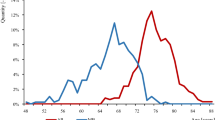Abstract
In lieu of growing requirement of total knee arthroplasty (TKA), we represent an effective approach to establish material-model optimisation of TKA. In the present study, we have proposed different computer-aided designing models in combination of metals, ceramics and polymers of knee prosthesis, and it illustrates the best material-model for working and life-span. New class of design features consisting of perforated surface in ‘Without Stem but attached Base Connector (WSBC)’, ‘Without Stem Without Base Connector (WSWBC)’, ‘Double Stem Without Base Connector (DSWBC)’ and ‘Double Stem with Base Connector (DSBC)’ is proposed and performed finite element analysis (FEA) under static load of 80 KgF. Lowest deformation and minimum strain comprises in case of zirconia-toughened alumina (ZTA) femur and tibial prototypes in comparison to identical combination of Ti6Al4V, SS316, CoCrMo and ZrO2 prototypes. In consideration of design, dimension and material features, ZTA-based Double Stem with Base Connector (DSBC) femur, UHMWPE articulating insert and ZTA tibial combination eventually exhibits higher degree of performance under compressive mode of loading. Optimised combination of material-model promotes the functional ability and thus expected reduction of re-surgery for younger patients.







Similar content being viewed by others
References
Dye, S.F.: An evolutionary perspective of the knee. J. Bone Joint Surg. 69(7), 976–983 (1987)
Alvarado, J., Maldonado, R., Marxuach, J., Otero, R.: Biomechanics of hip and knee prostheses, Applications of Engineering Mechanics in Medicine, GED – University of Puerto Rico Mayaguez, 1–20, (2003)
D Kluesset. et al., A convenient approach for finite element analysis of orthopaedic implants in bone contact: modeling and experimental validation, Comput. Methods Prog. Biomed., 95, 23–30, 2009
Samadhiya, S., Yadav, A., Rawal, B.R.: Biomechanical analysis of different knee prosthesis biomaterials using fem, IOSR-JMCE, 11(3), Ver. IV, 120–128, (2014)
Mallesh, G., Sanjay, S.J.: Finite element modeling and analysis of prosthetic knee joint. Int. J. Emerg. Technol. Adv. Eng. 2(8), 2250–2459 (2012)
J Kircher, P Bergschmidt, R Bader et. al., The importance of wear couple for younger endoprosthesis patients, Orthop., 36: 337–346, 2007
Wang, J., Stevens, R.: Zirconia-toughened alumina ceramics. J. Mater. Sci. 34, 3421–3440 (1989)
Sarkar, D., Reddy, B.S., Basu, B.: Implementing statistical modelling approach towards development of ultrafine grained bioceramics: case of ZrO2-toughened Al2O3. J. Am. Ceram. Soc. (2017). https://doi.org/10.1111/jace.15255
Sarkar, D., Sambireddy, B., Mandal, S., Basu, B.: Patient specific near-net shaped uniaxially pressed femoral head and acetablar socket, and Fabrication method thereof, European Patent, WO/2017/134614, 10th (2017)
Smith & Nephew: Total system specification guide and product catalog, legion total knee system, USA, 02861v1 (2015)
Pena, E., Calvo, B., Martínez, M.A., Doblare, M.: A three dimensional analysis of the combined behaviour of ligaments and menisci in the healthy human knee joint. J. Biomech. 39, 1686–1701 (2006)
Zhao, J.H., Ma, S.F., Wei, X.Y.: Finite element analysis of femur stress under bending moment and compression load. IEEE. 978(1), 4244–4134 (2009)
Jacobs, J.J., Campbell, P.A., Konttinen, Y.T.: How has the biologic reaction to wear particles changed with newer bearing surfaces? J. Am. Acad. Orthop. Surg. 16(Suppl 1), S49–S55 (2008)
Hallab, N.J., Anderson, S., Caicedo, M., Skipor, A., Campbell, P., Jacobs, J.J.: Immune responses correlate with serum-metal in metal-on-metal hip arthroplasty. J. Arthroplast. 19(Suppl 3), 88–93 (2004)
Mohammed, M.T., Khan, Z.A., Siddiquee A.N.: Beta titanium alloys: the lowest elastic modulus for biomedical applications: a review, Int. J. Chem. Mol. Nucl. Mater. Metall. Eng. 8(8) (2014)
Aroukatos, P., Repanti, M., Repantis, T., Bravou, V., Korovessis, P.: Immunologic adverse reaction associated with low-carbide metal-on-metal bearings in total hip arthroplasty. Clin. Orthop. Relat. Res. 468, 2135–2142 (2010)
G Bellefontaine, The corrosion of CoCrMo alloys for biomedical applications (Thesis), School of Metallurgy and Materials, University of Birmingham, (2010)
Savarino, L., Baldini, N., Ciapetti, G., Pellacani, A., Giunti, A.: Is wear debris responsible for failure in alumina-on-alumina implants? Acta Orthop. 80, 162–167 (2009)
Sarkar, D., Swain, S.K., Adhikari, S., Reddy, B.S., Maiti, H.S.: Synthesis, mechanical properties and bioactivity of nanostructured zirconia. Mater. Sci. Eng.: C. 33(6), 3413–3417 (2013)
Nine, M.J., Choudhury, D., Hee, A.C., Mootanah, R., Osman, N.A.A.: Wear debris characterization and corresponding biological response: artificial hip and knee joints. Materials. 7, 980–1016 (2014)
Lange, F.F.: Transformation toughening part 4: fabrication, fracture toughness and strength of Al2O3-ZrO2 composites. J. Mater. Sci. 17, 247–254 (1982)
Krell, A., Blank, P.: On abrasive wear of zirconia-toughened aluminas. Wear. 124(3), 327–330 (1988)
Singh, V.K., Reddy, B.R.: Synthesis and characterization of bioactive zirconia toughened alumina doped with HAp and fluoride compounds. Ceram. Int. 38, 5333–5340 (2012)
Piconi, C., Maccauro, G.: Review: zirconia as a ceramic biomaterial. Biomaterials. 20, 1–25 (1999)
Sarkar, D., Sambireddy, B., Mandal, S., Ravisankar, M., Basu, B.: Uniaxial compaction-based manufacturing strategy and 3D microstructural evaluation of near-net-shaped ZrO2-toughened Al2O3 acetabular socket. Adv. Eng. Mater. 18, 1634–1644 (2016)
Willmann, G.: 20 years aluminium oxide ceramics for medical applications. Biomed. Tech. (Berl.) 39, 73–80 (1994)
Author information
Authors and Affiliations
Corresponding author
Electronic supplementary material
ESM 1
(DOCX 12 kb)
Rights and permissions
About this article
Cite this article
Tumulu, S., Sarkar, D. Computer-aided design, finite element analysis and material-model optimisation of knee prosthesis. J Aust Ceram Soc 54, 429–438 (2018). https://doi.org/10.1007/s41779-017-0169-9
Received:
Revised:
Accepted:
Published:
Issue Date:
DOI: https://doi.org/10.1007/s41779-017-0169-9




